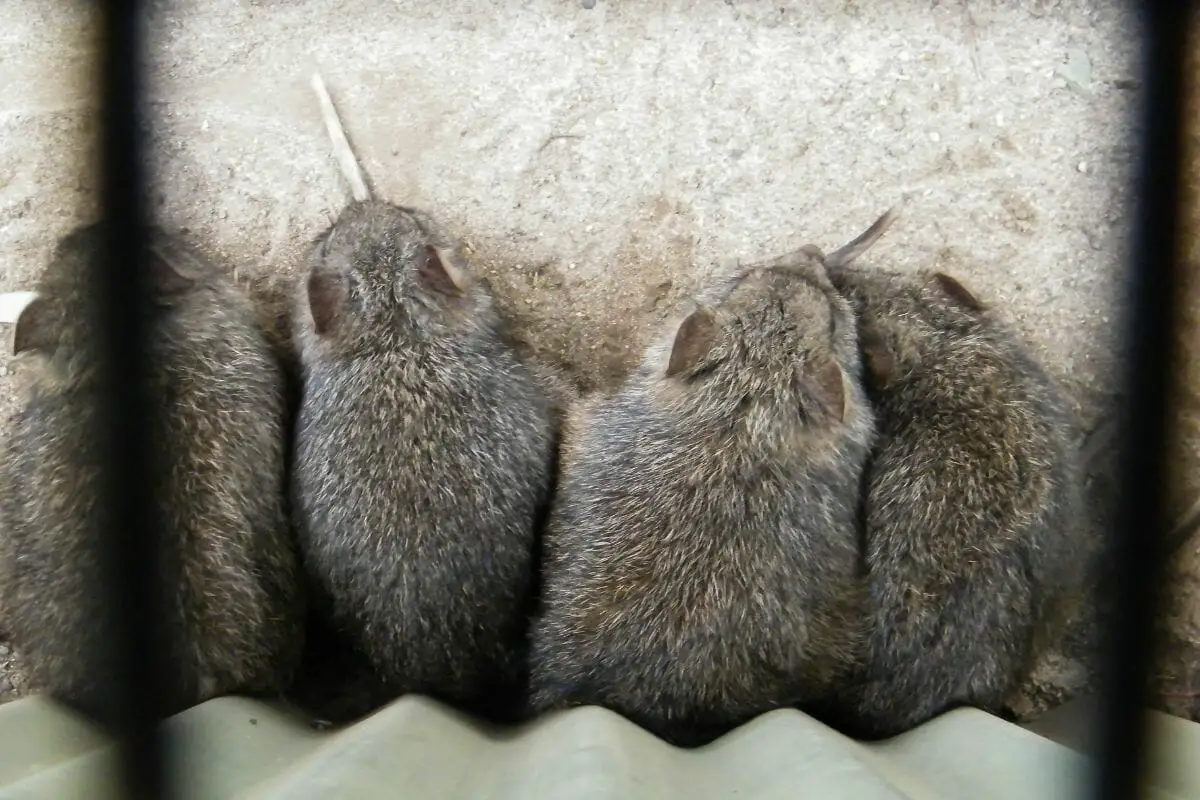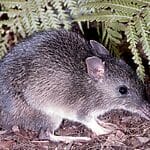Bandicoots – we’ve probably all heard of them thanks to a particular ripped shorts wearing orange video game character.

However, how many of us even know what they actually look like, or anything about how they like to live? Well, if you’ve ever been curious about these little creatures, this is the article for you.
This post will unpack the habitat and life of the bandicoot, so keep reading to learn everything that you’ve ever been curious about regarding these mouse-like critters.
What Is A Bandicoot?
First of all we have to establish exactly what a bandicoot is. The name comes from the Indian Telugu language word “pandi-kokku” which literally means “pig-rat”.
Though these animals look a lot like mice or rats, they’re actually marsupials like koalas or kangaroos, rather than rodents.
They typically have gray-brown fur, pointed ears and long snouts that they use for foraging underground, looking for small insects and larvae. They are nocturnal and prefer to hunt and forage at night.
Bandicoots are rarely more than 50cm long, usually much smaller than that, and very light. This is why they’re so often mistaken for rats. In the wild, bandicoots can live anywhere from two to four years.
Where Do Bandicoots Live?
Bandicoots are native to Australia (see also: Desert Bandicoot: Another Scar On Australia’s Biodiversity) and Papua New Guinea, and can be found all around these countries. They can thrive in a variety of different habitats, from heaths, to woodlands, to rainforests.
However, they do much prefer to live in areas with dense vegetation to shelter under during the day whilst they sleep. Then, at night, they like open areas that they can easily forage for during the night when they are more active.
This makes the bushland that is common to Australia best for them.
Though they used to thrive all across Australia, they have lost a lot of the bush land following European settlement. In fact, there are areas of the country where certain species of bandicoots are locally extinct.
Although the Northern Brown Bandicoot is not technically endangered, it is extinct in parts of Queensland and Northern New South Wales.
To combat this, there are conservation efforts to protect the bushland and its surviving residents.
Bandicoot Behavior
Now that we know what bandicoots are and the kinds of habitats that they live in, we can explore the ways that bandicoots live and how they typically behave.
So the first thing that there is to know is that bandicoots are solitary animals.
This means that they don’t live in packs or groups, choosing instead to live on their own, only interacting with other members of their species when it’s time to mate or raise their young.
As well as this, bandicoots are terrestrial creatures which means that they don’t climb. They live their life on the ground, and don’t climb up trees and this differs from the majority of their marsupial cousins.
Though they are known to sleep throughout the day and shelter beneath dense foliage, at night, bandicoots are highly active.
They will run about as they search for food, with a run that has been likened to a gallop.
Like other marsupials and rodents, bandicoots are omnivorous, eating both animals and plants as they find them. Their diet can range from insects and larvae, to fungi, berries, and fruit.
The larger species of bandicoots have also been known to eat mice, snails, and even lizards.
Their foraging habits actually play an important role in the ecology of their environment.
As they search for food, they end up turning over soil, which increases how quickly the leaf litter decomposes and cycles the nutrients in the newly produced soil.
As well as this, they spready fungi spores about, and so they are vital to the surviving quality of many habitats and the plant diversity.
Bandicoot Breeding
As mentioned, Bandicoots are strictly solitary and particularly territorial, smacking their land through a gland behind their ears.
Males and females only interact during mating season, otherwise they cannot tolerate the company of each other.
However, mating season happens quite regularly, as bandicoots have the shortest gestation period of any other marsupial. They are only pregnant for about 11 days before they give birth to up to five babies at a time.

This means that bandicoots can reproduce up to four times a year.
As bandicoots are marsupials, female bandicoots have a pouch where she protects her young, and lets them grow.
However, for these terrestrial mammals, their pouch is backwards compared to kangaroos, meaning that it opens at the back, so that no dirt can get in whilst she’s digging.
When their young are born, they are only about 1cm long, and can take up to three months to be able to live independently.
Unfortunately, this is another species of animal that will resort to eating their young if food is particularly scarce.
Threats To Bandicoots
Other than the threat of being eaten as a baby because their mom needs to eat, the biggest threat to a bandicoot is habitat loss.
Urbanization and land-clearing has destroyed a lot of the natural Australian wildlife, which means less places for these animals to live.
Along with urbanization comes introduced-predators like foxes, cats, and dogs, as well as collisions with vehicles.
Their natural predators are snakes, owls, quolls, and dingoes, though these animals aren’t likely to cause too much disruption to the bandicoot’s population.
Even other herbivores that have been introduced like rabbits and deer pose a threat to bandicoots because there is now a lot more competition for food.
Conservation Efforts
Prior to European settlers coming to Australia, there were nine different species of bandicoot living in the area. Now nearly two thirds of these species are extinct.
There are conservation efforts going on throughout the continent, including having specific reserves for small animals.
On these reserves, cattle and sheep have been removed, as well as other invasive species of feral herbivores in order to reduce competition for food.
Every so often, these reserves will execute low-intensity burns so that they can control the spread of invasive species of weeds whilst protecting and minimizing the harm to native species.
These efforts have managed to keep the remaining bandicoot species alive.
Frequently Asked Questions
What Habitats Do Bandicoots Live In?
Bandicoots can live in a wide variety of habitats. They can thrive in rainforests, and well as dry woodlands.
They are nocturnal so during the day, bandicoots nest in shallow holes that they create or find in the ground, sometimes they find disused warrens or burrows.
How Do Bandicoots Adapt To Their Environment?
They have thick fur coats that help it stay warm as it forages throughout the night when temperatures are cold.
What Do Bandicoots Eat?
Bandicoots are omnivores, meaning that they enjoy berries and fruit as well as small insects and even mice and lizards.
What Noises Do Bandicoots Make?
The most commonly heard noise made by a bandicoot is a loud squeaking sound like a pet’s chew toy.








